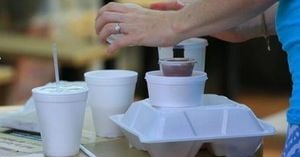A novel Congo Red Ultraviolet Spectrophotometry assay has been successfully developed to quantify β-glucan in various Cordyceps species, addressing a significant gap in standardized detection methods. Throughout the food and pharmaceutical industries, β-glucans are widely recognized for their health benefits, as they stimulate immune response and have applications in various therapeutic contexts.
One of the key findings from this study is the identification of optimal extraction conditions for β-glucan quantification. The method established the use of dimethyl sulfoxide (DMSO) as the extraction solvent, with a neutral pH of 7.0, a reaction temperature of 65 °C, and an extraction time of 60 minutes. These parameters not only maximize extraction efficiency but also ensure a reliable analysis.
Researchers from Yunnan University conducted this work, highlighting the growing necessity for efficient analytical techniques in both food production and pharmaceutical development. Beta-glucans are polysaccharides found in the cell walls of fungi, plants, and bacteria, and are known for their potent biological activities. In the Cordyceps genus, these compounds offer dual benefits, acting both as structural elements and demonstrating significant medicinal properties, such as immunomodulation and anti-tumor effects.
The research utilized three species of Cordyceps: C. militaris, C. cicadae, and C. fumosorosea. Validation tests confirmed that the assay is precise, reproducible, and stable, making it a valuable tool for further research and industrial applications. Interestingly, results showed that C. fumosorosea contains marginally higher levels of β-glucan compared to the other two species, which may enhance its potential use in functional food products and nutraceutical formulations.
Efforts to standardize detection methodologies have long been hampered by inconsistencies and inefficiencies in existing techniques. Traditional methods, such as fluorescence detection or enzymatic assays, often require costly instrumentation and can be sensitive to experimental conditions. In this context, the Congo Red assay stands out with its high specificity and efficient binding to β-glucan, facilitating accurate quantification without the significant pretreatment that other methods necessitate.
Importantly, the assay’s practicality extends to industrial settings, where the demands for cost-effective, rapid analysis are paramount. As companies increasingly seek to validate health claims associated with various food supplements and medicinal products, having a reliable method for quantifying β-glucans could vastly improve quality control processes.
The experimental design was meticulous. Researchers screened five distinct extraction reagents, concluding that DMSO exhibited the highest extraction efficacy for β-glucan. They examined parameters including solvent type, pH, temperature, and time, ensuring that all variables were optimized to achieve the best results in β-glucan extraction.
The research team highlighted the prospective applications of their findings, suggesting that the Congo Red UV spectrophotometry could pave the way for better quality assessment of medicinal and edible fungi products while addressing the pressing need for standardized methods in the industry. They noted that the quantification method could be beneficial not only for food safety and quality control, but also for enhancing product development in the rapidly expanding Cordyceps market, particularly in Asia, where these fungi are a staple in traditional medicine.
In conclusion, the study effectively establishes a solid foundation for future research that could diversify the range of species analyzed, potentially recognizing additional Cordyceps with high β-glucan content that may be economically viable. As the understanding of β-glucans continues to evolve, along with the growing demand for natural health products, this research highlights both the necessity and the promise of further studies aimed at refining these analytical techniques. Future directions could include expanding the method to encompass a wider variety of Cordyceps species and comparing findings against alternative analytical techniques to offer a comprehensive perspective on the role of β-glucans in health and nutrition.




